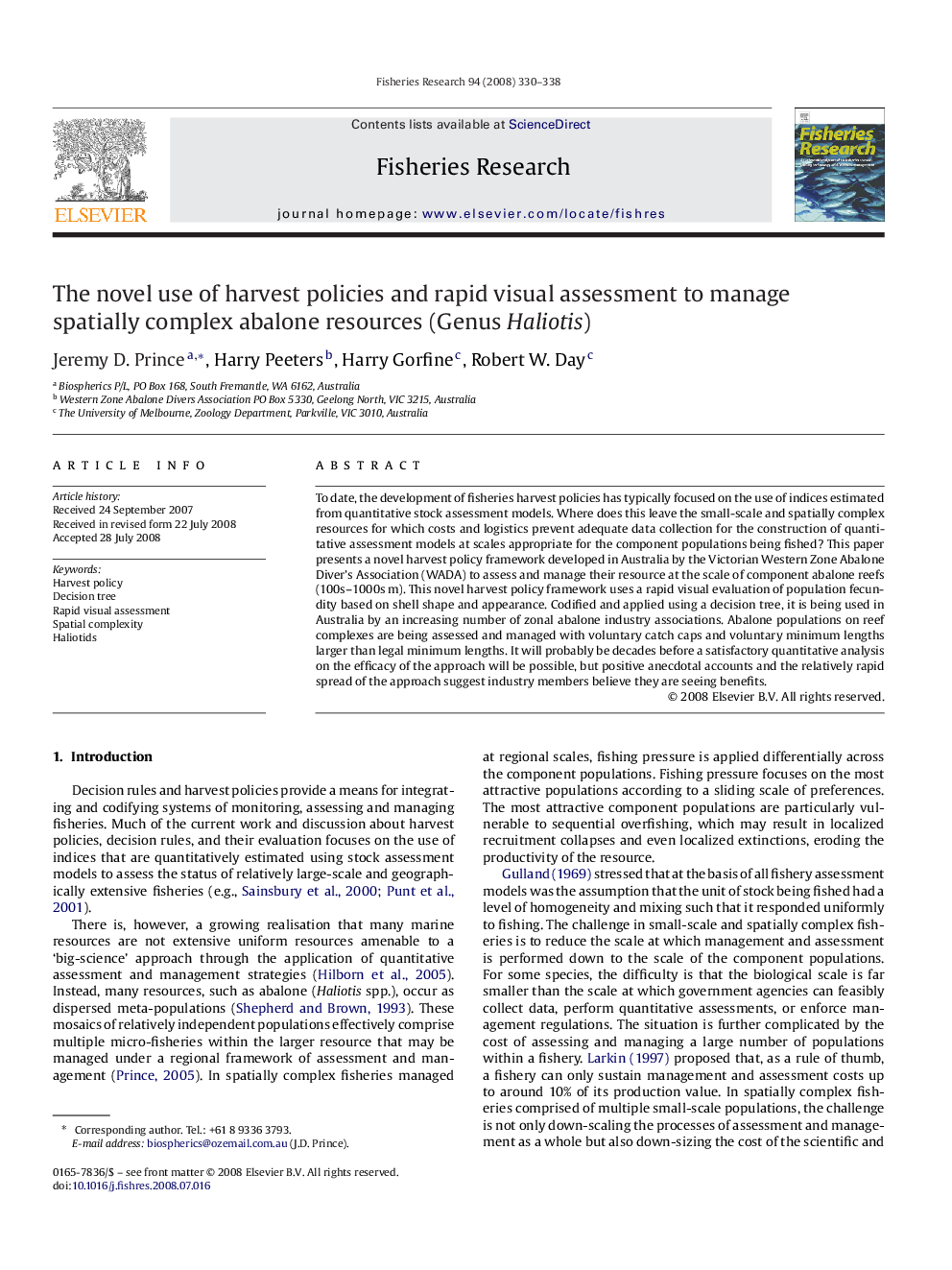| Article ID | Journal | Published Year | Pages | File Type |
|---|---|---|---|---|
| 4544487 | Fisheries Research | 2008 | 9 Pages |
To date, the development of fisheries harvest policies has typically focused on the use of indices estimated from quantitative stock assessment models. Where does this leave the small-scale and spatially complex resources for which costs and logistics prevent adequate data collection for the construction of quantitative assessment models at scales appropriate for the component populations being fished? This paper presents a novel harvest policy framework developed in Australia by the Victorian Western Zone Abalone Diver’s Association (WADA) to assess and manage their resource at the scale of component abalone reefs (100s–1000s m). This novel harvest policy framework uses a rapid visual evaluation of population fecundity based on shell shape and appearance. Codified and applied using a decision tree, it is being used in Australia by an increasing number of zonal abalone industry associations. Abalone populations on reef complexes are being assessed and managed with voluntary catch caps and voluntary minimum lengths larger than legal minimum lengths. It will probably be decades before a satisfactory quantitative analysis on the efficacy of the approach will be possible, but positive anecdotal accounts and the relatively rapid spread of the approach suggest industry members believe they are seeing benefits.
